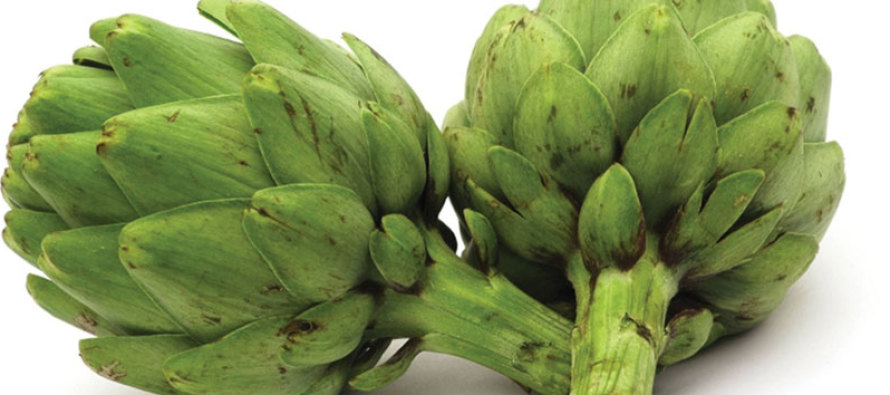Artichokes

When I was ten, we used to rush home from school to watch Spanky and Our Gang. Buckwheat and Spanky were sitting on a curb rummaging through a bag of groceries looking for something to eat.
Buckwheat pulls out something and asks, “What is it?”
“It’s an artichoke.”
“Well, it may have choked Artie, but it’s not gunna choke me,” and he pitches it over his shoulder.
Ok, I admit it seemed a lot funnier when you were ten. Some of us, at first blush, may have felt as Spanky and Buckwheat. I know I did. Back then I didn’t know what an artichoke was either.
A member of the thistle family, it was first introduced to America by the Italian and Spanish settlers. Its season runs from March through May. How you prepare it depends on the desired outcome.
You will want to look for the globe artichoke with tightly closed leaves. The brown spots you may see are usually an indication of frost damage and won’t affect the taste. Check the stem for freshness. It should appear light green without any signs of browning or drying, indicating aging. Bend a leaf back. It should snap back quickly.
Ask any chef how to prepare it and you will get as many answers as chefs asked. Artichokes can be roasted, steamed, baked, or marinated. Most fans treasure the heart in the young, tender ones, or the leaves scraped between the teeth after a dip in sauce, but the bottom is the meatiest part. I have seen them snipped with scissors, hand-turned with a paring knife, a chef knife, or if you are Alton Brown, an electric knife.
One method using a chef’s knife is to square off the artichoke after first removing the top third. Once squared off, continue to trim off any excess leaves. Taking a paring knife, round off the bottom and peel the stem. Have acidulated water handy to prevent the artichoke from browning as you work with it. If the stem is too long, trim it. Place it alongside the edge of the table and snap it, which will remove it completely, or use your knife.
Eventually you will come to the center of the choke, known as the heart. It is both the best and the worst part. You will need to remove the thistle inside the heart. If you have kept the choke whole, separate the leaves to expose the thistle. Using a spoon, scoop out all the thorny thistle. It may take a few sweeps to completely remove it. Be patient: the best is near. Rinsing it in acidulate water, work quickly to round out the bottom. Check the stem: if it is too thick, peel it some more.
Quartered, steamed whole or roasted, take heart knowing that once you master the thistly artichoke, it should no longer choke you (or Artie).
No comments
Write a commentOnly registered users can comment.











